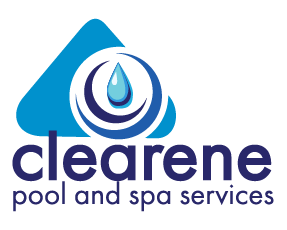Water Sanitization Basics – Chlorine
The number one concern many pool owners and pool professionals face is proper sanitization. Unsanatized water can lead to cloudy, dull water, algae bloom, or even worse, disease causing water. In order to keep your water sparkling, crystal clear and healthy for all users, maintaining proper sanitizer levels is very important. The 3 most common types of sanitizers used in pool/spas are Chlorine, Bromine and Biguanide. Here, I will discuss the basics of chlorine sanitation.
Chlorine
Chlorine is the most effective and economical sanitizer available. Those factors along with its availability makes chlorine the most popular sanitizer used in Pools. Ideal free chlorine level is between 1-3 parts per million in residential pools free chlorine and 2-5 parts per million in public pools. Spas should maintain 2-5 parts per million free chlorine. Combined chlorine needs to be treated when it exceeds 0.2 parts per million (more on that in future blog posts) Chlorine is sold in multiple variations: calcium hypochlorite (cal hypo,) sodium hypochlorite (liquid chlorine), lithium hypochlorite, gas chlorine (elemental chlorine), sodium dichlor (dichloro-s-triazinetrione), and trichlor (trichlor-s-triazinetrione.) Chlorine can be either stabilized or unstabilized. For a more in depth look into how chlorine works, and more advanced education, stay tuned for future blog posts.
Calcium Hypochlorite (cal hypo) Ca(CIO)2
Cal Hypo is a non-stabilized chlorine available in granular or tablet form. It is available in 47%, 65% and 78% available chlorine. Cal hypo is high in calcium and has a pH of 10.8, which will tend to raise you total hardness and pH of your water, which may lead to scaling of pool walls and equipment.
Sodium Hypochlorite (liquid chlorine) NaCIO
Sodium hypochlorite is a non-stabilized form of chorine and is available in liquid form only which ranges from 10-15% available chlorine. Sodium hypochlorite has a pH around 13, which is the highest pH of any type of chlorine. Because it is a liquid, it disperses very quickly in water, and is often used for shock treatments. Liquid chlorine has a relatively short shelf life, which can be shortened even more due to exposure to UV (sunlight) or heat.
Lithium Hypochlorite LiCLO
Lithium hypochlorite tends to be the most expensive form of chlorine. It is a non-stabilized chlorine, available in granular form only, with a pH of 10.7, and will tend to raise the pH of your water. Lithium hypochlorite is recommended for oxidation and super chlorination. Lithium hypochlorite fast dissolving and is 100% water soluble.
Gas Chlorine (elemental chlorine)
Gas chlorine is the cheapest way to chlorinate a pool. IT IS ALSO THE MOST DANGERIOUS, AND REQUIRES SPECIAL EQUIPMENT. THIS IS NOT RECOMMENDED FOR RESIDENTIAL USE. Chlorine gas has a pH of 0-1 and has 100% available chlorine. CHLORINE GAS SHOULD NOT BE USED BY ANYBODY WHO IS NOT A CERTIFIED POOL OPERATOR (CPO), HAVE HAD PROPER TRAINING USING THE EQUIPMENT, AND HAVE MET ALL LOCAL CODE LICENSING AND PERMITS. Chlorine gas is primarily used in commercial applications such as hotels and resorts.
Sodium Dichlor (dichloro-s-triazinetrione) C3Cl2NaO3
Dichlor is a stabilized chlorine (contains cyanuric acid and is protected from UV rays) available in granular form only. It is available with 56% and 63% available chlorine and has a pH of 6.5 so it may lower pH and alkalinity of the water. Dichlor dissolves quickly and completely and will not contribute to calcium scaling. Having too high of a stabilizer (cyanuric acid) above 50 parts per million may reduce chlorines effeteness to kill bacteria and algae. This is the most commonly used granular chlorine used in both pools and spas.
Trichoro-s-triazinetrione (Trichlor) C3Cl3N3O3
Trichlor is a stabilized chlorine with a pH of 3 and available chlorine of 85% and 90%, which is the highest chlorine content for solid form of chlorine. It is available in both granular and tablet form (most commonly in 3 inch tablets, to be used in a chlorine feeder) A great of majority of trichlor sold in slow dissolving tabs or sticks and is generally not used for shocking a pool or spa.
Below (figure 1.1) is a chart to be used only as a GENERAL GUIDE for adding chlorine to your pool. Always follow manufactures guidelines for chemical additions and wear proper safety equipment while handling all pool chemicals. Also below (figure 1.2) on how pH effects the efficiency.
Conclusion
Here I have covered the very basics of each form of chlorine, its benefits and issues that you may run into while using each form and hope I have given you the knowledge to help you pick the chlorine that is right for you. Stay tuned for future blog posts for a more in depth look chlorine, including breakpoint chlorination, chlorine and non chlorine shocks, water balancing, equipment selection and more!
Figure 1.1 chlorine additions
Figure 1.2 pH vs chlorine efficiency
 Source: The Association of Pool and Spa Professionals® Service Tech Manual 4th Edition
Source: The Association of Pool and Spa Professionals® Service Tech Manual 4th Edition
